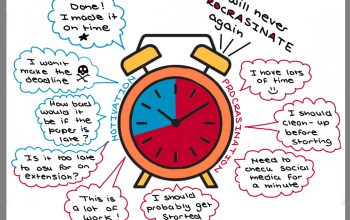Photo Credit: the blowup via Unsplash
Fast fashion is easy to purchase, but the repercussions of doing so go far beyond repair
Halimah Kasmani, The Mike Staff Writer
Consumerism is extremely prevalent, now more than ever. Lockdown measures implemented in response to COVID-19, combined with the never-ending possibilities of online shopping, have made it incredibly easy and tempting to make impulse purchases without considering the consequences. This is especially true in regard to fast fashion, which is a topic of contention that is rapidly gaining attention on social media. There is an ongoing debate concerning fast fashion and whether it is reasonable to support the industry, due to its overall accessibility, despite its unethical labour practices and complete disregard for the environment.
There are many people who argue in defence of fast fashion due to its affordability and extended size ranges. Unfortunately, the sustainable fashion industry can be quite pricey, and it is not as size-inclusive, which are valid concerns. People who are not considered the ‘average’ size should not have to struggle to find clothing that fits them well, nor should anyone have to pay exorbitant prices they cannot afford for clothing. However, there are alternatives that are sustainable, affordable, and size-inclusive. For one, the best thing you can do is to shop your own closet. By looking through your own collection of clothes and picking out pieces that can be styled in different ways, rather than throwing them out or buying new clothes, you save yourself money and avoid contributing to an exploitive industry, while knowing they fit you well. Second-hand stores, such as vintage or thrift stores, are another alternative to fast fashion that is far less damaging than purchasing fast fashion. Another alternative is to trade clothing with family members or friends. It is also important to consider that the sustainable fashion industry is slowly evolving and introducing lower price points and a wider range of sizes. An added benefit is that sustainably made garments tend to be constructed better and will last you for years to come. This prevents the constant purchasing of clothing from companies that create more than they can ever sell. This excess clothing finds itself in landfills, so it is no surprise that the fast fashion industry is a large contributor to the climate crisis.
This being said, there are some circumstances that constrain the options available while looking for new clothing. In these scenarios, purchasing fast fashion is unavoidable. However, often the alternatives are ignored in favour of fast fashion because it is harder to find on-trend items or items that match someone’s personal style using them.
We have the privilege of worrying about trivial problems such as the inability to curate a style using sustainable options. In fact, we prioritize such issues over the exploitation of garment factory workers. Fast fashion is so easy to purchase; you can literally do it with the tap of a button.
Furthermore, social media has become a source of pressure to make impulse purchases. Clothing is consistently being promoted, and trends change at a very fast pace. Apps like TikTok and Instagram have managed to exacerbate over-consumption: an example being how users often post massive hauls from notoriously unethical shops such as Shein and Romwe, influencing others to do the same.
By opting for the numerous alternatives to fast fashion, we can slowly reduce the number of exploitative corporations that are imposing on both the environment and garment factory workers. It is impossible to expect every single person to make an immediate transition towards using sustainable sources of clothing, as barriers towards accessing them remain. Those who are able should work towards eliminating these barriers for people of all backgrounds, but in the meantime, it is important to simply remain mindful about our purchases.




